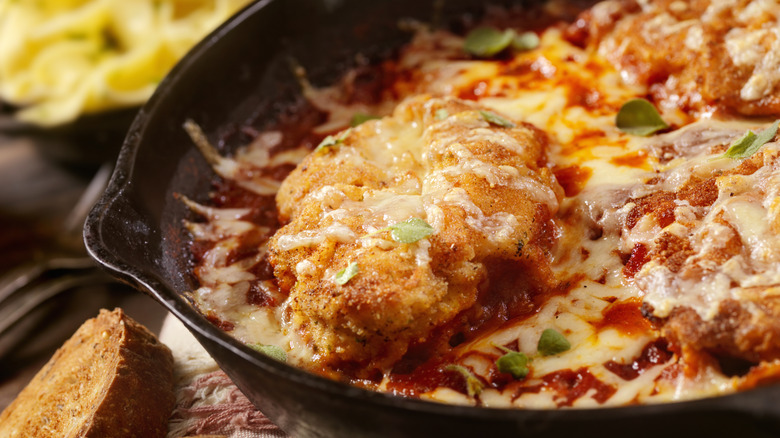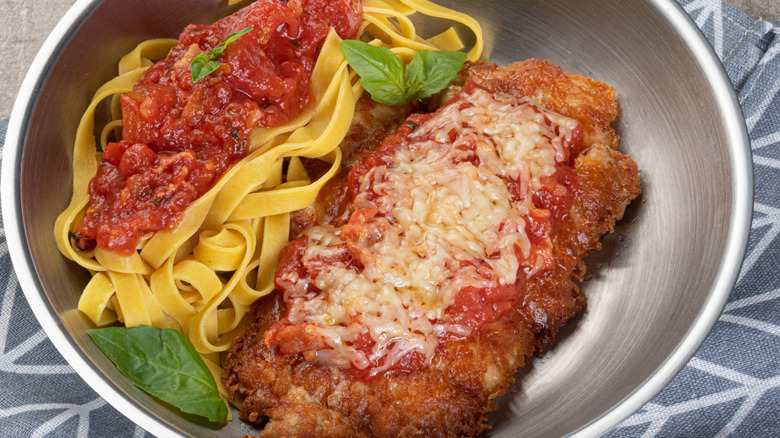If You Want Crispy Chicken Parm, Stop Drowning It In Sauce
Who doesn't love chicken parm? This Italian classic is a favorite in both restaurants and home cooking, but achieving professional results in your own kitchen can be a bit of a challenge. Quintessential chicken parmesan has three key components: A crispy slab of tenderized chicken, savory marinara sauce, and a generous layer of melted cheese. Savvy home chefs will immediately notice a bit of a conundrum in the basic concept of chicken parm — if you cover it in sauce, you lose the toasty, crunchy texture that you worked hard to achieve on the chicken.
The key is to avoid bathing your chicken in a pool of sauce. You only need enough to spread lightly over the surface; perhaps one or two tablespoons per piece. And you definitely don't require sauce on the bottom as well! Avoiding excessive amounts of sauce-to-chicken contact is your key to maintaining a beautiful texture on your meat while still savoring the tomato-y sweetness that the marinara brings to the dish. Marinara sauce may have gotten its name from the sea, but that doesn't mean you need an ocean of it to get the job done.
To keep things crispy, rethink your chicken parm presentation
Your first defence against a soggy supper is to get your chicken cutlets as crispy as possible. To that end, an ingredient swap that you need to make for the best chicken parm is using something super-crunchy like crushed croutons or cornflakes for your breading. But even chicken with a luscious crust is going to suffer in a bowl of sauce. If you like a saucy chicken parm, one fix is to change your layering strategy and melt the cheese first, then add your sauce. The cheese will form an extra layer of protection from plentiful marinara.
Another option for sauce lovers is to use a light hand on topping the chicken, then serve a ramekin of sauce on the side for dipping. Again, the sauce on top is not a pool, so it doesn't ruin the consistency. If you like pasta with your chicken parm (and who doesn't?), you should serve it on the side so that the sauced pasta doesn't make the bottom soggy. You could also try a totally left-field idea, and stuff your chicken pieces with the cheese and sauce rather than layering them on the top. A little unorthodox, but it once again swerves around the issue of pouring watery sauce all over your breading. If you are willing to think outside the box with your chicken parm, you can have your sauce and your crispy chicken, too — no need to choose.

